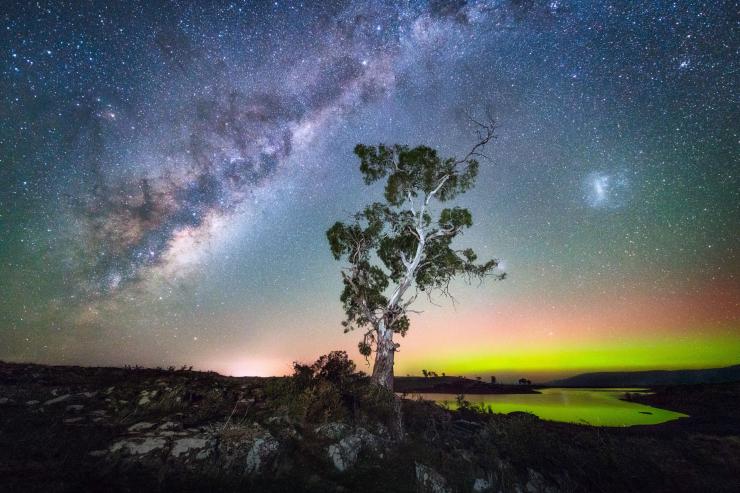Daylight saving begins at 2am, Eastern Standard Time, on the first Sunday in October and ends at 3am Eastern Daylight Saving Time on the first Sunday in April. During this time Sydney moves to Australian Eastern Daylight Time (AEDT), UTC +11.

Weather in Sydney
Find information on temperature, rainfall and seasonal activities to help plan your holiday in Sydney.
What is the weather like in Sydney?
Sydney enjoys a sunny climate with mild winters and warm summers, perfect for making the most of the outdoors. Plan ahead with this information on temperature and rainfall.
Summer (December – February)
During summer, average temperatures range from 18.6 - 25.8°C (65.5 - 78.4°F), and average humidity spikes to 65%. This is a great time to enjoy Sydney’s abundant beaches when water temperatures rise to 21.9 - 23.7°C (71.4 - 74.7°F).
Autumn (March – May)
Autumn is the mildest time of year in Sydney when the humidity drops and average temperatures fall between 14.6 - 22.2°C (58.3 - 72°F). Crisp, fresh air makes autumn the season for enjoying Sydney’s coastal walks. Keep your eyes peeled for humpback whales, which migrate north from May to August.
Winter (June – August)
Sydney’s winter months are June to August when average temperatures drop between 8.8 - 17°C (47.8 - 62.6°F). Sydney’s rainfall is generally highest in June, with an average of 132 mm (5.2 inches), while July is the coolest month when average daytime temperatures reach about 17°C (62.6°F).
Spring (September – November)
In spring, days are warmer but the humidity is not as high as summer. Average daily temperatures range from 11 - 23°C (51.8 - 73.4°F).
Frequently Asked Questions about the weather in Sydney
Seasonal weather in Sydney
SUMMER
| Weather Categories | Dec | Jan | Feb |
|---|---|---|---|
| 25.7 78 | 26.4 80 | 26.3 79 | |
| 17.5 64 | 18.8 66 | 19 66 | |
| 74 | 94 | 113 | |
| 11 | 11 | 11 |
AUTUMN
| Weather Categories | Mar | Apr | May |
|---|---|---|---|
| 25.2 77 | 22.9 73 | 20 68 | |
| 17.8 64 | 14.1 57 | 10.9 52 | |
| 115 | 106 | 101 | |
| 12 | 11 | 11 |
WINTER
| Weather Categories | Jun | Jul | Aug |
|---|---|---|---|
| 17.6 64 | 17 63 | 18.3 65 | |
| 8.6 47 | 7.1 45 | 8.1 47 | |
| 120 | 69 | 77 | |
| 11 | 9 | 9 |
SPRING
| Weather Categories | Sep | Oct | Nov |
|---|---|---|---|
| 20.5 69 | 22.5 73 | 24 75 | |
| 10.3 51 | 13.1 56 | 15.3 60 | |
| 61 | 72 | 81 | |
| 9 | 11 | 11 |






























































































































